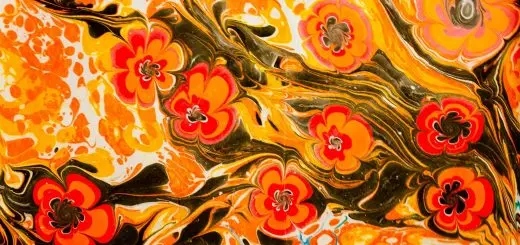The Environmental Impact of Fast Fashion: What You Can Do

Looking for more amazing products? Check out our online store and explore our collection here! Happy shopping!
Before diving in, please note: This post is for informational purposes only. If you’d like to know more about how we approach topics, feel free to check out our friendly Disclaimer Page.
Hey there, amazing readers! 
We’re committed to delivering quality posts, and your support (even just sticking around despite the ads) means everything to us. So, bear with us, and thanks for helping us keep the good vibes rolling. Now, on to the fun stuff!
TRANSLATE BUTTON AT THE END OF THE ARTICLE
A Quick Overview
Fast fashion has swiftly taken over our wardrobes and shopping habits.
Think about it: how many times have you scrolled through social media and spotted that perfect outfit, only to find it available for a bargain price?
It’s tempting, isn’t it?
The allure of trendy clothing at a fraction of the cost has hooked countless consumers.
But while we enjoy the thrill of a new outfit, we often overlook the hidden costs.
Fast fashion isn’t just about cheap clothes; it’s an industry that significantly impacts our planet.
In this article, we’ll dive into the environmental toll of fast fashion and explore practical ways you can contribute to a more sustainable future.
Understanding Fast Fashion: A Quick Overview of Its Rise
Fast fashion refers to the rapid production of inexpensive clothing to meet the latest trends.
It emerged in the late 20th century, fueled by globalization and technological advancements.
Brands like Zara and H&M revolutionized the fashion landscape by introducing new collections every few weeks, making it easy for consumers to stay stylish without breaking the bank.
But what drives this phenomenon?
The cycle of consumerism plays a huge part.
With social media influencers showcasing their outfits daily, the pressure to keep up with trends escalates.
We often buy clothes not just for need, but to express our identity or to fit in.
The environmental consequences?
Well, they’re staggering.
Massive amounts of resources are consumed to produce these garments, and once they’re out of style, they often end up in landfills.
The industry thrives on a throwaway culture, which only exacerbates the situation.
Just consider how many items sit unworn in your closet after a single wear.
It’s clear that the fast fashion model is unsustainable.
While we enjoy our bargain buys, the environment pays the price.
So, what can we do about it?
Let’s explore the impacts further.
The Environmental Toll: Water, Waste, and Pollution Explained
The fast fashion industry is a significant culprit in environmental degradation.
One of the major issues is water consumption.
Did you know that it takes about 2,700 liters of water to produce a single cotton t-shirt?
That’s enough to sustain one person for nearly three years!
Farming cotton requires massive amounts of water, and the pollution from chemicals used in the dyeing process contaminates nearby water supplies.
Then there’s the waste.
The average American throws away around 81 pounds of clothing each year.
Fast fashion encourages us to buy more, resulting in mountains of textile waste.
It’s estimated that 92 million tons of textile waste are created globally each year.
Many clothes are sent to landfills, where they take years to decompose, releasing harmful chemicals in the process.
Air pollution is another concern.
The production of synthetic fibers like polyester emits significant amounts of CO2.
Fast fashion factories often operate in countries with lax environmental regulations, leading to unchecked pollution levels.
This not only harms the environment but also adversely affects the health of workers and nearby communities.
By understanding these impacts, we can begin to make informed choices.
So, let’s dig deeper into how clothing is made and disposed of.
The Life Cycle of Clothing: From Production to Disposal
The life cycle of clothing is complex, but I’ll break it down into manageable parts.
Here’s a simplified overview:
Raw Materials: The process starts with raw materials, like cotton, polyester, or wool.
The production of these materials requires land, water, and energy, often leading to deforestation and habitat destruction.
Manufacturing: Once raw materials are harvested, they are sent to factories for processing.
Many of these factories are located in countries with poor labor laws, leading to exploitation and unsafe working conditions.
Transport: After manufacturing, clothes are shipped worldwide.
Shipping contributes to emissions, adding to the carbon footprint.
Retail: Finally, the clothes reach retailers.
Fast fashion brands often push for rapid turnover, encouraging consumers to buy more and more.
Consumption: We purchase and wear these items, often only a few times before they lose their appeal.
Disposal: Many garments are tossed aside.
Around 85% of textiles end up in landfills or incinerators.
This disposal process releases greenhouse gases, further harming our planet.
The cycle continues, often with devastating effects.
Understanding this life cycle helps us recognize our role as consumers and prompts us to seek alternatives.
The Role of Microplastics: Hidden Hazards in Our Wardrobe
Microplastics are tiny plastic particles less than five millimeters in size, and they are lurking in our closets.
Synthetic fabrics like polyester shed microplastics every time we wash them.
Even if we wash our clothes responsibly, these particles enter our waterways, harming aquatic life and ecosystems.
Research indicates that microplastics have been discovered in marine animals and even in the seafood we eat.
It’s alarming to think that our fashion choices could be contributing to this cycle.
The fashion industry contributes to this microplastic pollution significantly.
It’s estimated that a single load of laundry can release up to 700,000 microfibers.
So, what can we do?
Opt for natural fibers like cotton or linen, which break down more easily in the environment.
Being mindful of our clothing choices doesn’t stop there.
We can invest in washing bags designed to trap microfibers.
It’s a small change that can lead to big impacts.
Let’s explore some inspiring alternatives.
Ethical Fashion vs. Fast Fashion: What’s the Difference?
Understanding the distinction between ethical and fast fashion is crucial for making informed choices.
Fast fashion is characterized by low prices, trendy designs, and quick turnover.
Ethical fashion takes a different approach, prioritizing transparency, sustainability, and fair labor practices.
Some key differences include:
Production Practices: Ethical fashion brands often use sustainable materials and ensure fair wages for workers.
Fast fashion, on the other hand, frequently prioritizes profit over people.
Environmental Practices: Ethical brands focus on minimizing waste and pollution.
They might use organic cotton, recycled materials, and eco-friendly dyes.
Fast fashion tends to exploit natural resources without consideration for the environment.
Transparency: Ethical brands are transparent about their supply chains and production methods.
Fast fashion brands often hide their practices, making it challenging for consumers to know where their clothes come from.
Supporting ethical fashion brands can make a significant difference.
It’s about choosing quality over quantity and supporting companies that align with our values.
Sustainable Choices: Brands That Are Making a Difference
Fortunately, many brands are stepping up to the plate, creating eco-friendly and ethically produced clothing.
Here are a few noteworthy examples:
Patagonia: Known for outdoor gear, Patagonia is a pioneer in sustainable fashion.
They use recycled materials and donate a percentage of sales to environmental causes.
Everlane: This brand focuses on transparency in pricing and production.
They provide detailed information about their factories and materials.
Reformation: Reformation creates trendy clothes using sustainable materials and practices.
They even track the environmental impact of each item they sell.
Eileen Fisher: This brand emphasizes sustainability and social responsibility, using organic fibers and promoting a circular economy.
When we choose to support brands committed to sustainability, we join a movement that amplifies our collective impact.
Let’s explore other ways to be eco-conscious in our fashion choices.
Thrift Shopping: A Fun Way to Save and Be Eco-Friendly
Thrift shopping is the ultimate treasure hunt!
Not only can you snag some amazing finds, but you’re also giving clothes a second life.
Thrift stores, consignment shops, and online resale platforms like Poshmark and Depop are fantastic options for sustainable shopping.
Why is thrift shopping so great?
Saves Money: You can find high-quality items for a fraction of the original price.
Unique Styles: Thrift stores often have one-of-a-kind pieces that help you stand out from the crowd.
Supports Local Communities: Many thrift stores support charitable organizations, meaning your purchases contribute to a good cause.
Reduces Waste: Buying secondhand keeps clothes out of landfills and reduces demand for new production.
Next time you’re tempted to buy new, consider hitting up a local thrift shop.
You never know what gems you’ll uncover!
DIY Fashion: Upcycling Your Clothes for a Unique Style
Have you ever thought about transforming your old clothes into something new?
Upcycling is a creative way to refresh your wardrobe while minimizing waste.
Here are some fun, simple ideas to get you started:
Turn a T-shirt into a Tote Bag: Snip off the sleeves and bottom, then tie the remaining fabric into knots for a stylish tote.
Patchwork Denim: Use scraps of fabric to create unique patches for your jeans, giving them a new life.
Tie-Dye: Revamp an old shirt with some dye.
It’s a fun project that can add a splash of color to your wardrobe.
Refashioning: Take an item that doesn’t fit or you don’t wear and make it your own!
Whether it’s shortening a dress or adding embellishments, DIY can spark creativity.
Getting crafty not only reduces waste, but it also allows you to express your personal style.
Plus, it can be a fun way to spend an afternoon!
The Power of Renting: Fashion Without the Footprint
Renting clothes has become a popular trend, and for good reason!
It provides access to high-quality, designer pieces without the environmental cost of fast fashion.
Here are some popular rental platforms to consider:
Rent the Runway: Ideal for special occasions, this platform allows you to rent designer dresses and accessories.
Le Tote: This subscription service lets you rent everyday clothes with the option to purchase items you love.
HURR Collective: A peer-to-peer rental platform where you can borrow and lend clothing from your community.
Renting is a win-win.
You get to enjoy new styles without the commitment of ownership, and you help combat the throwaway culture.
It’s a refreshing alternative that promotes sustainability.
Educating Others: Spreading Awareness About Fast Fashion
One of the most effective ways to combat fast fashion is through education.
By sharing information with friends, family, and your social circles, we can collectively make more informed decisions.
Here are some strategies to spread the word:
Host a Clothing Swap: Gather friends and trade clothes you no longer wear.
It’s a fun way to refresh your wardrobe and spark conversations about sustainability.
Share on Social Media: Use your platforms to highlight the impacts of fast fashion and promote sustainable practices.
Start Conversations: Discuss the importance of ethical fashion with friends.
Sharing personal insights can inspire others to rethink their purchases.
Provide Resources: Curate articles, documentaries, or books on fast fashion and sustainability to share with others.
By educating those around us, we can create a ripple effect, encouraging more people to make responsible fashion choices.
Your Personal Impact: Small Changes That Make a Big Difference
It’s easy to feel overwhelmed when considering the environmental impact of fast fashion.
However, small changes can lead to significant outcomes.
Here are a few simple actions you can take:
Buy Less: Before making a purchase, consider if you truly need the item.
The fewer clothes you buy, the less demand there is for fast fashion.
Choose Quality Over Quantity: Invest in well-made items that will last longer.
This not only reduces waste but often saves money in the long run.
Take Care of Your Clothes: Follow washing instructions, repair damages, and store items properly to extend their life.
Support Local Brands: Many local businesses focus on sustainability.
They often provide unique, high-quality items that support your community.
Every small step counts.
Remember, it’s not about perfection; it’s about progress.
Join the Movement: Advocacy for Sustainable Fashion Practices
Finally, consider advocating for sustainable fashion practices.
Join or support organizations focused on environmental and ethical fashion.
Here are a few ways to get involved:
Sign Petitions: Many organizations are actively working to improve labor conditions and environmental practices in the fashion industry.
Signing petitions can amplify their efforts.
Participate in Events: Join local clean-up days, fashion shows, or awareness campaigns that focus on sustainable fashion.
Educate Policymakers: Contact your local representatives about the importance of regulating the fashion industry to promote sustainability.
Advocacy can make a difference at a larger scale.
By joining the movement, you become part of a community striving for positive change.
Conclusion
The environmental impact of fast fashion is significant, but there’s hope.
By understanding the issues and making conscious choices, we can all contribute to a more sustainable future.
From thrifting to upcycling, renting to educating others, every small action can lead to meaningful change.
Let’s not just follow trends; let’s set them.
Together, we can choose fashion that respects the planet, our fellow humans, and ourselves.
So next time you’re tempted by a fast fashion deal, remember the bigger picture.
With a little thought and effort, we can create a wardrobe that’s stylish and sustainable.

The Enlightenment Journey is a remarkable collection of writings authored by a distinguished group of experts in the fields of spirituality, new age, and esoteric knowledge.
This anthology features a diverse assembly of well-experienced authors who bring their profound insights and credible perspectives to the forefront.
Each contributor possesses a wealth of knowledge and wisdom, making them authorities in their respective domains.
Together, they offer readers a transformative journey into the realms of spiritual growth, self-discovery, and esoteric enlightenment.
The Enlightenment Journey is a testament to the collective expertise of these luminaries, providing readers with a rich tapestry of ideas and information to illuminate their spiritual path.
Our Diverse Expertise
While our primary focus is on spirituality and esotericism, we are equally passionate about exploring a wide range of other topics and niches 

To ensure we provide the most accurate and valuable insights, we collaborate with trusted experts in their respective domains 
Our blog originally focused on spirituality and metaphysics, but we’ve since expanded to cover a wide range of niches. Don’t worry—we continue to publish a lot of articles on spirituality! Frequently visit our blog to explore our diverse content and stay tuned for more insightful reads.
Hey there, amazing reader! 
Check out our store here and take a peek at some of our featured products below! Thanks for being awesome!










